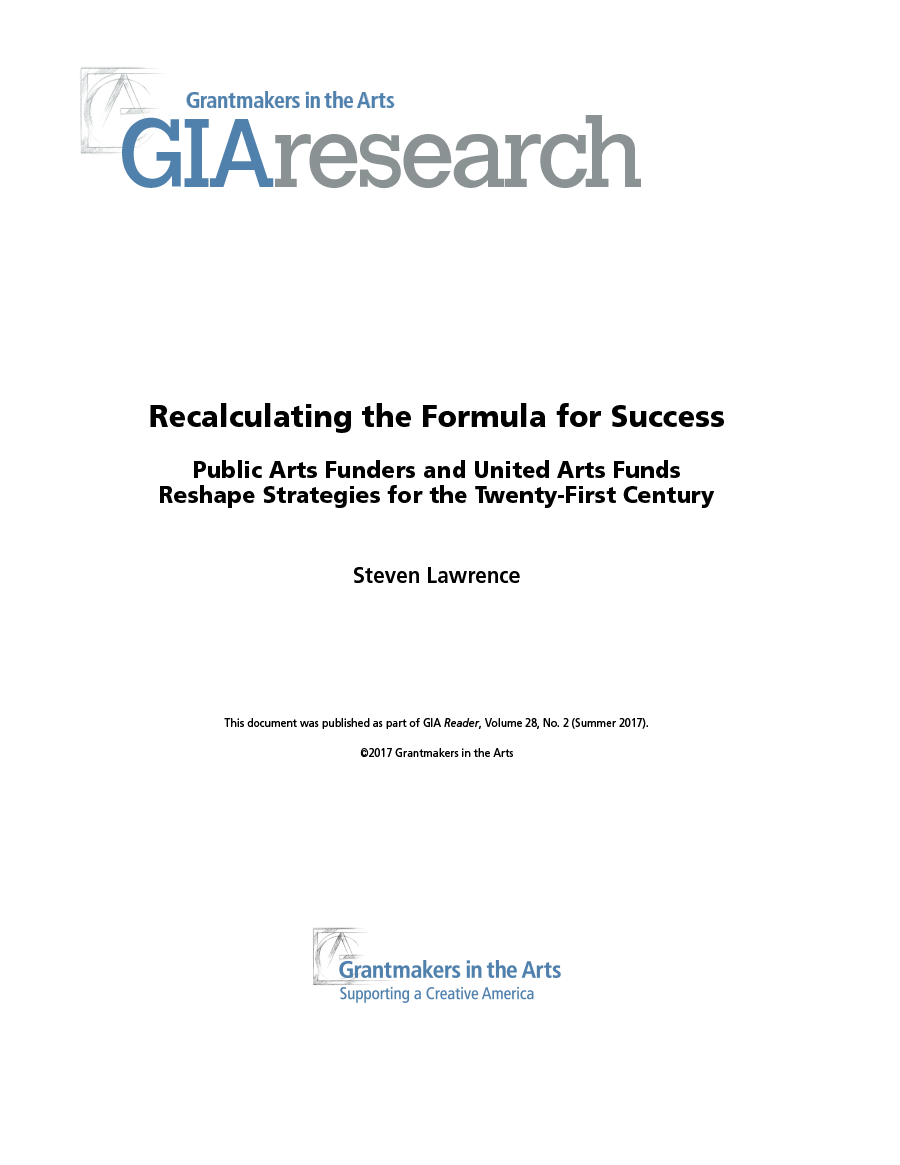GIA Reader (2000-present)
GIA Reader (2000-present)
I pulled my car out of the driveway and parked in front of my neighbors’ house across the street. A few moments later, my friend, Marvin Morales, a thirty-one-year-old Guatemalan PhD student in biology at the University of Florida, opened the door. His right arm hung across his shirtless torso in a navy-blue sling. Across his collarbone there was a rectangular piece of gauze. I asked Marvin how he was feeling. Not good, he said. The pain in his shoulder had kept him up most of the night.
Read More...I was privileged to have facilitated GIA’s Funder Forum on Arts in Medicine this past February in Orlando, Florida. In that role, I had the opportunity to listen to and learn from the gathered practitioners and funders. Since then, I have reflected on what for me was an exceptional day of sharing and exchange that I think benefited both the participants and the growing arts-in-medicine field. Here is some of what emerged.
Read More...One of the key issues of our time is health care. We know that it is complicated because of its vast scale of services and intimate reach into every life, family, and community in this country. The search for access to high-quality health care for millions of Americans is often difficult. Medical advances of the twentieth and the twenty-first centuries have extended the life span, cured pandemic diseases like polio, and have made it possible to manage chronic illnesses once debilitating.
Read More...There are many arguments for continued federal funding to the National Endowments for the Arts and the Humanities (NEA and NEH), the Corporation for Public Broadcasting (CPB), and the Institute of Museum and Library Services (IMLS) — all agencies that would be eliminated by President Trump’s 2018 budget.
Read More...Download:
Read More...Judy Malloy, ed. 2016. 465 pages, The MIT Press, Cambridge, Mass.; London.
Read More...Two years ago, I had breakfast with a colleague — very nice guy who has helped build the social, or “impact,” investing sector. I shared my ideas about how to connect impact investing with the arts.
To him, investing in the arts meant buying a Picasso or a Van Gogh, collecting art objects. He agreed there was a market for fine art. But impact investing in the arts? He was dead against it.
Read More...As a new administration enters our nation’s White House, it is timely to reflect on the way that private philanthropy and public foundations joined forces to step into the gap when federal funding for the arts was dramatically reduced in the early 1990s.
Read More...As our country prepares for a Trump presidency, the issue of economic revitalization in rural American has much more urgency than eight months ago when I started collecting data for this work. Here is a sampling of headlines from coverage by the New York Times of the economic decline in the rust belt, or more specifically, coal country and Appalachian towns: “Trump’s Promises Will Be Hard to Keep, but Coal Country Has Faith” (Nov. 28, 2016); “A Bleak Outlook for Trump’s Promises to Coal Miners” (Nov.
Read More...

